Health Care Mistakes: Our Biggest One
HEALTH CARE MISTAKES: OUR BIGGEST ONE (ISSUE 171) MARCH 24, 2015
By Diane Gold
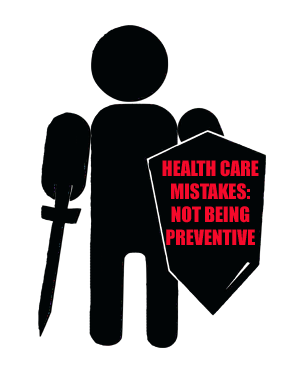 Health care mistakes: our biggest one is not being preventive, a topic very dear to my heart. The topic has been in my purview for some time. The rumblings of this article began with a simple conversation.
Health care mistakes: our biggest one is not being preventive, a topic very dear to my heart. The topic has been in my purview for some time. The rumblings of this article began with a simple conversation.
THE CONVERSATION
Harvey, a near and dear friend, and I were having this conversation, that I started, about being tested for vitamin, mineral, phytochemical levels. We did not decide to debate the topic; it evolved so innocently but actually spelled out the way many people in America look at medicine: from the diagnostic perspective.
I said that I thought a primary care physician’s job was to make certain the patient’s systems were in balance and that it was necessary to test whether a person’s nutritional intake was adequately fulfilling the needs of the body. And to discover if there were any imbalances, which would take extensive study; though not always accurate, we could have vitamin, mineral and phytochemical testing. And, as many specialists I have spoken with agree, we shouldn’t have to beg for these tests.
OUR BIGGEST MISTAKE
Harvey replied that when we go to the primary care doctor, we get tests done based on our diagnosis. He also mentioned that Medicare (which he and I both began within the year) only pays for tests that match our diagnoses.
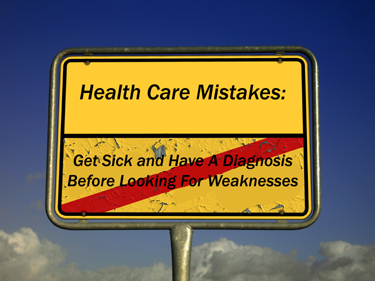 I told him that this is the biggest mistake in all our healthcare system and that I consider it ludicrous. If we believe, and by we, I mean the physicians and dieticians who treat us, that we are asked to get sick and have a diagnosis before looking for weaknesses of which blood is a somewhat good predictor; we are propagating a disease care system, not a health care system. If we believe that it’s important to act well, sleep well, eat well, think well, move well, drink well and measure the result; we will prevent diagnoses often.
I told him that this is the biggest mistake in all our healthcare system and that I consider it ludicrous. If we believe, and by we, I mean the physicians and dieticians who treat us, that we are asked to get sick and have a diagnosis before looking for weaknesses of which blood is a somewhat good predictor; we are propagating a disease care system, not a health care system. If we believe that it’s important to act well, sleep well, eat well, think well, move well, drink well and measure the result; we will prevent diagnoses often.
HOW TO CORRECT THE MISTAKE
I said to Harvey that I wanted him to think about my view because I realized he was one of the people who was raised as a patient of a Western medical system that professes to cure things through medication and intervention once an imbalance exists already.
I proposed,
1) ACTION STEP ONE
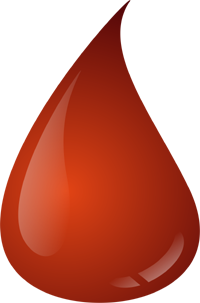 “What if we were to test our vitamin-mineral-phytochemical levels on a regular basis! We would confirm that we were eating well or that we would be wise to adjust a way of eating our nutrients through our daily routine of eating well.”
“What if we were to test our vitamin-mineral-phytochemical levels on a regular basis! We would confirm that we were eating well or that we would be wise to adjust a way of eating our nutrients through our daily routine of eating well.”
2) ACTION STEP TWO
(This is a What If Scenario, not because I support the way Big Pharma acts, but because it is powerful, organized, competent.)
Another suggestion to the world is to include Big Pharma to help spread the word about the importance of measuring and testing nutritional levels. Could we pay it to make everyone aware that it’s good health care to monitor nutrition through testing and have insurance pay for the tests?
PUBLISHER’S NOTE
Since Big Pharma makes such a huge sum from drugs, many of which could be eliminated by nutrition; Big Pharma is not going to come along happily, unless paid. The government won’t regulate it because political campaigns run on its dollars. And its sister and brother (mostly brother) board members in Big Media, Big Petro-Chem, Big Agro, Big Food, Big Data, Big University, Big Finance would be affected and growling, too.
So, please someone who is brilliantly creative; use my scenario and develop a strategy to satisfy the monetary gap so we can use Big Pharma to fix our health care system.
The best creatives for this fix could actually be TV script writers, some of the most creative minds in the bunch.
3) ACTION STEP THREE
Finally, Western doctors have not been trained in the importance of doing preventive tests. They are trained to find a pre-existing condition. Their understanding has been reinforced by the fact that they know that any insurance system works on the disease model and each doctor is monitored for the tests s/he orders by how well they match the diagnoses that exist. Let’s change nutritional education in medical schools. And one way to do that is to employ ACTION STEP 2) which includes Big Pharma, where we give Big Pharma a reason not to hide nutritional findings.
BACKGROUND
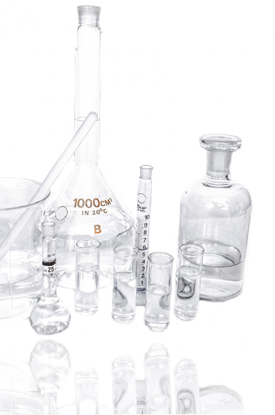 In medical school, much funding comes from pharmaceutical companies, meat. There are also connections to meat, fish and dairy concerns, petro-chemical/pesticide companies, including bioengineering seed companies. What’s important about this is these companies want to sell their products. They want to make a good impression on soon-to-be-doctors who will be advocating care for the goodness of their future patients.
In medical school, much funding comes from pharmaceutical companies, meat. There are also connections to meat, fish and dairy concerns, petro-chemical/pesticide companies, including bioengineering seed companies. What’s important about this is these companies want to sell their products. They want to make a good impression on soon-to-be-doctors who will be advocating care for the goodness of their future patients.
The industries mentioned above know that if they make donations to medical schools, including private donations from board members; school provosts will be more likely to keep industry information out of coursework.
School administrators, required to hunt down the almighty dollar for survival, may also allow industry donors to run seminars for doctors and medical students that are favorable to themselves. In fact, these companies control some of the slant on disease management (intervention) vs. health care management (prevention) by making it clear that their donations depend upon the school’s advocating their positive image.
Also interesting is that pharmaceutical reps as well as other company advocates are wooing medical students even before they graduate. The pharmaceutical budget donates most of the continuing education conferences for already graduated doctors, and, much as we think we are objective, we are wooed by those who buy us gifts.
THE TRUTH
At this time, Big Pharma does not emphasize disease prevention because it wants us to buy pharmaceuticals to contribute to its livelihood. It’s not that Big Pharma is heartless. But, in order to continue developing monumental drugs that can lengthen lives, of which there are many, and enhance life quality through various combinations of chemicals; the industry thinks it has to blind us rather than educate us.
The truth is, as I see it, that if Big Pharma were tasked to educate us properly, we would all do well. We would still need some of their life-lengthening drugs currently under development, and we could pay the industry for its expertise in marketing, management and an ally in the corporate jungle. We just couldn’t pay as much as they currently make.
INCENTIVIZING BIG PHARMA TO HELP WITH PREVENTION
Let me point out, again, that this is a what if scenario and something to think about or from which to create (rather than criticize).
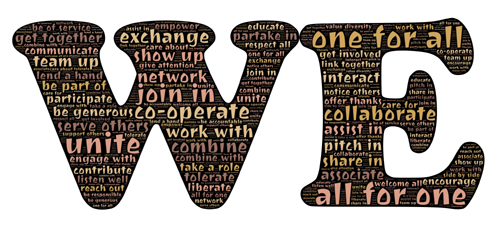 Since Big Pharma’s marketing machine is in place, we could use it for good. Instead of working against an already built corporatocracy, why not figure out a way to subsidize it for helping to market preventive care in place of disease care with the money we save through the nutritional secrets that are revealed! Here’s why this philosophy could be beneficial to all of us.
Since Big Pharma’s marketing machine is in place, we could use it for good. Instead of working against an already built corporatocracy, why not figure out a way to subsidize it for helping to market preventive care in place of disease care with the money we save through the nutritional secrets that are revealed! Here’s why this philosophy could be beneficial to all of us.
According to the Agency for Healthcare Research & Quality, in 2010, Americans spent $20.4 billion dollars on prescription drugs for hypertension (about half of all treatment for hypertension). Let’s say Big Pharma or some independent concern, discovers a natural blood pressure fix, such as chewing turmeric root for 5 minutes a day; we can lower our blood pressure to (low) normal range.
If Big Pharma publicized this, freely and nurturingly, potentially it would be reducing its income by $20.4 billion dollars per year, since everyone could go chew turmeric instead of taking blood pressure lowering meds. In order to incentivize Big Pharma to disclose this nutritionally beneficially evidence; it needs to be given a supplement for its sacrifice. The turmeric association’s making an additional $750 million dollars is so very little compared to the cost of drugs, so any commission the turmeric growers could give to Big Pharma would be a small incentive.
The amount we save on health care, as a nation, would be significant. I do not have a statistic at this point, but I do know that the amount the government saves on sickness might leave room for the government to incentivize Big Pharma. If in 2010, we spent $42.9 billion on blood pressure sickness (according to AHRQ and according to the CDC in 2011, we spend $46 billion dollars), and we used turmeric instead of medicine; we would reduce spending of $20.4 billion on drugs and spend half a million on turmeric therapy. If the government gave 50% of its part of the $20.4 billion dollars being saved to Big Pharma, we might have an actual reality.
CONCLUSION
Health care mistakes are related to who benefits from what. We all want to lead a good life. This includes making enough money, being healthy and feeling abundant within ourselves.
Imagine if we had the powerful corporatocracy working to evolutionize health care system. Now, that would be something. The bottom line here is that we deserve to be able to test our nutritional values. If doctors, insurance companies, drug companies and all the other related industries that are part of the machine made just as much money from prevention as from sick care; we would be well on our way to honesty, integrity and removing health care mistakes, the biggest one.
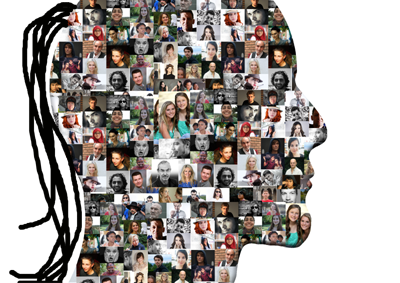 Let us put our heads together, and think on how we can make this work. The example here is only food for thought. Much research and discussion is needed to find the most viable solutions to wellness. If we start today, we will have begun. Let’s take this health care mistake and convert it to health care strategy where we all win.
Let us put our heads together, and think on how we can make this work. The example here is only food for thought. Much research and discussion is needed to find the most viable solutions to wellness. If we start today, we will have begun. Let’s take this health care mistake and convert it to health care strategy where we all win.
![]()
If you wish to share your story, please hit reply in your email program to be contacted.
If you need habit help, go to warriorsofweight-consulting.
![]()
FEEDBACK
We value your feedback very much.
Please leave a comment below.
Please LIKE us on the website and at
WarriorsOfWeight on Facebook.
You can also follow us on Twitter @warriorsoweight.
Thanks.
![]()
DIANE GOLD, PUBLISHER AND AUTHOR
Diane Gold, Founder of Warriors of Weight, Turning Habits Into Health, is a mentor in tai chi, kung fu and meditation, a music, fitness and stress expert, dedicated mom, studying peaceful conflict resolution, habit replacement and certified in plant-based nutrition.
She is always imagining a better way for us to serve ourselves health. She says,
“I come up with ideas that show how a particular infrastructure might work, in hopes that someone else will be able to build on my idea with a better idea that can create symbiosis for the world.
“I’m always looking for ways to improve the health care systems. In the meantime, let us all take good care of ourselves because we are so worth it!”
![]()

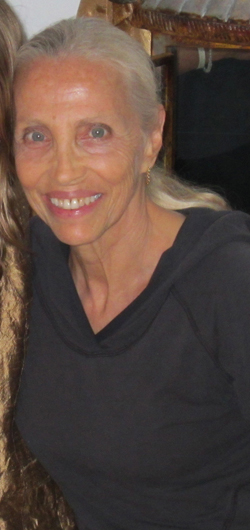 AT PEACE WITH DIANE GOLD
AT PEACE WITH DIANE GOLD 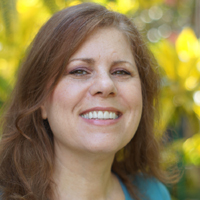
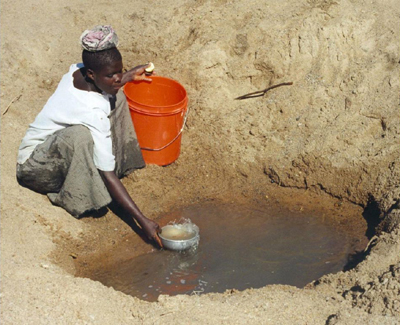 The reason I wrote this article was because I saw myself wasting water, even in the face of knowing that there is a water shortage. It really hit me when I had my own water shortage. I knew I was washing the dishes in my sink with the water running the entire time. I began to think that using a dishwasher, which my current residence lacks, might be more economical.
The reason I wrote this article was because I saw myself wasting water, even in the face of knowing that there is a water shortage. It really hit me when I had my own water shortage. I knew I was washing the dishes in my sink with the water running the entire time. I began to think that using a dishwasher, which my current residence lacks, might be more economical.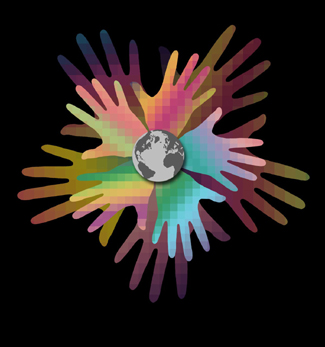 Some of us may not see there is a global water shortage. We don’t see 840,000,000 people in front of us every day who have no water. We say,
Some of us may not see there is a global water shortage. We don’t see 840,000,000 people in front of us every day who have no water. We say,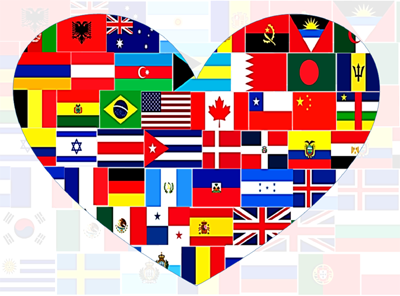 We forget quickly that we are part of one human family. If one part of our family is thirsty, then it is our responsibility to do something about it as if it were the people in our very house.
We forget quickly that we are part of one human family. If one part of our family is thirsty, then it is our responsibility to do something about it as if it were the people in our very house.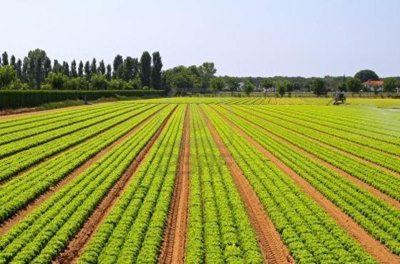 We could balance the water shortage by eating plants. That would allow everyone to have more water. According to everything I learned in my courses to become Certified in Plant-Based Nutrition, eating plants would prevent a bunch of chronic diseases and suffering; and it is not necessary to eat animal protein and most of us in the Western world are over-consuming protein.
We could balance the water shortage by eating plants. That would allow everyone to have more water. According to everything I learned in my courses to become Certified in Plant-Based Nutrition, eating plants would prevent a bunch of chronic diseases and suffering; and it is not necessary to eat animal protein and most of us in the Western world are over-consuming protein.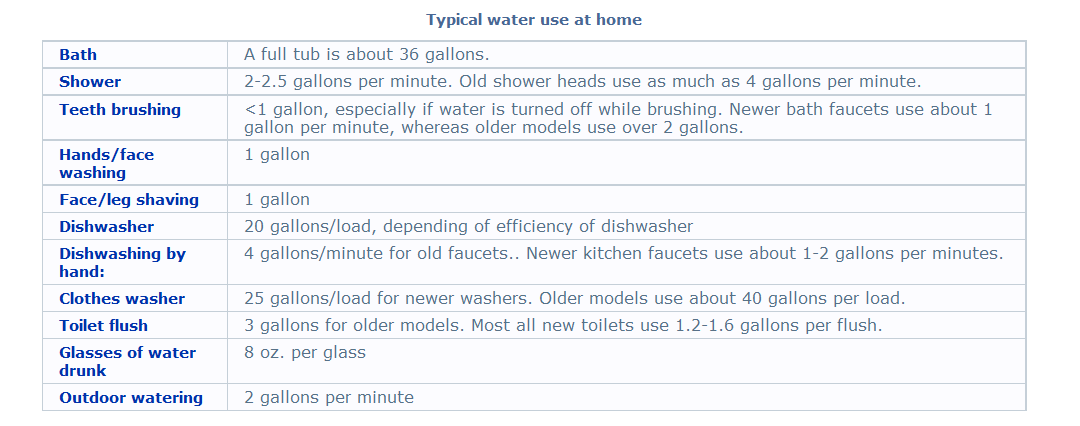
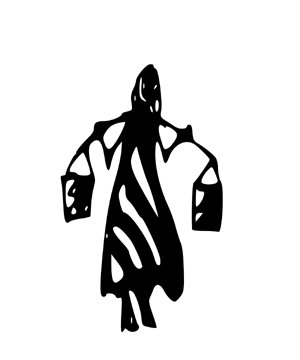 According to the April 29, 2011 article by Laurie Ure for CNN, nearly 1 billion people walk 3.5 miles a day to fill their jerry can to bring water home for the family. How often do those people get to their water source only to find a water shortage or a source that is dried up, closed, contaminated, unavailable? Something to think about.
According to the April 29, 2011 article by Laurie Ure for CNN, nearly 1 billion people walk 3.5 miles a day to fill their jerry can to bring water home for the family. How often do those people get to their water source only to find a water shortage or a source that is dried up, closed, contaminated, unavailable? Something to think about.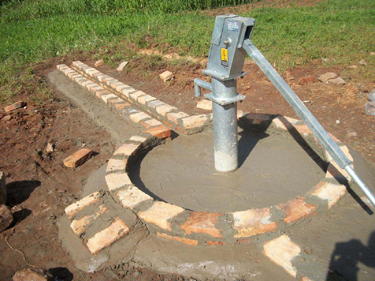 Although there is water shortage, there are areas worldwide that can access water with the right equipment. World Water Day, March 22 2015, celebrates water and our awareness that it is not forever. If you wish to donate to build a well so that 500-1000 people can have access to groundwater near their home in Africa for 10 years, please do it at:
Although there is water shortage, there are areas worldwide that can access water with the right equipment. World Water Day, March 22 2015, celebrates water and our awareness that it is not forever. If you wish to donate to build a well so that 500-1000 people can have access to groundwater near their home in Africa for 10 years, please do it at: 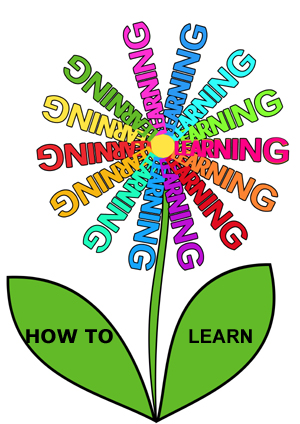 I can’t stress enough the importance of learning how to learn and how important it is to teach this from the start. Whether we are raised through education at home or by going to public or private school, one thing stands out: we each see through a different set of eyes. And our biggest mistake is not making first learners aware so they can decide for themselves the bias of their lessons. Learning How To Learn
I can’t stress enough the importance of learning how to learn and how important it is to teach this from the start. Whether we are raised through education at home or by going to public or private school, one thing stands out: we each see through a different set of eyes. And our biggest mistake is not making first learners aware so they can decide for themselves the bias of their lessons. Learning How To Learn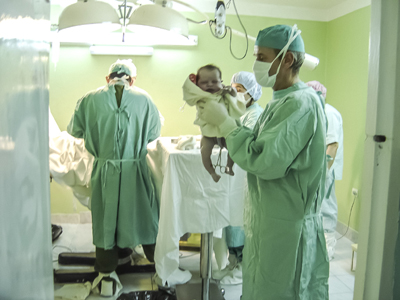 I am the first one to have blind faith and that most of us are good, nurturing and positive. The faith I would blindly follow, though is the understanding that we are all human, and humans, sometimes, without even knowing it, have internal agendas. When we are just born, we have not been influenced enough to be deceitful. After that, we can trust that the human spirit can be fickle. We can be blindly faithful in knowing that we all do our best to pass on the lesson, although doing our best usually includes our being influenced by how we have chosen to perceive the world.
I am the first one to have blind faith and that most of us are good, nurturing and positive. The faith I would blindly follow, though is the understanding that we are all human, and humans, sometimes, without even knowing it, have internal agendas. When we are just born, we have not been influenced enough to be deceitful. After that, we can trust that the human spirit can be fickle. We can be blindly faithful in knowing that we all do our best to pass on the lesson, although doing our best usually includes our being influenced by how we have chosen to perceive the world.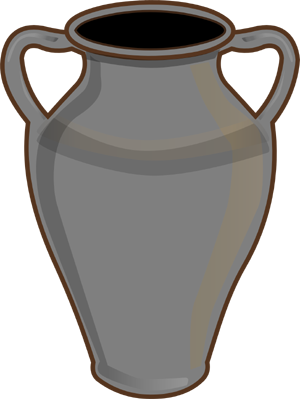
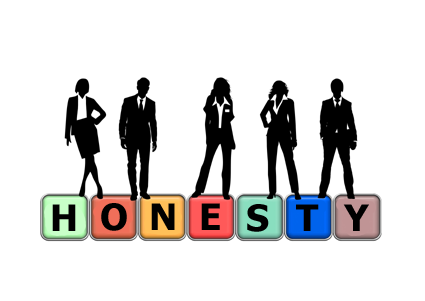 Let’s say we are going to hear a panel on whether it’s a good idea to genetically modify foods. As at any debate, we would hope to have all views present. In this case, the head speaker is the director of genetically modified foods industry, one panelist is in that person’s pocket and the third panelist is known not to speak out about GMOs.
Let’s say we are going to hear a panel on whether it’s a good idea to genetically modify foods. As at any debate, we would hope to have all views present. In this case, the head speaker is the director of genetically modified foods industry, one panelist is in that person’s pocket and the third panelist is known not to speak out about GMOs.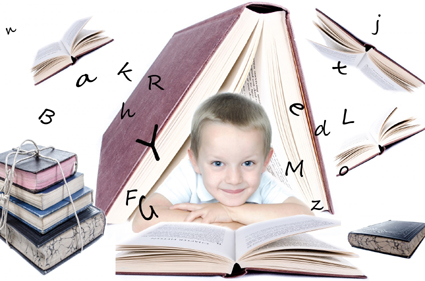 In order to work this idea of emptying ourselves so that we can fill ourselves with knowledge, a basic learning how to learn principal; we must come up with some trust system by which we live. The one I live by is that we blindly believe that we all do our best, but we are not perfect and show understanding when someone else is not or when we, ourselves, are not.
In order to work this idea of emptying ourselves so that we can fill ourselves with knowledge, a basic learning how to learn principal; we must come up with some trust system by which we live. The one I live by is that we blindly believe that we all do our best, but we are not perfect and show understanding when someone else is not or when we, ourselves, are not.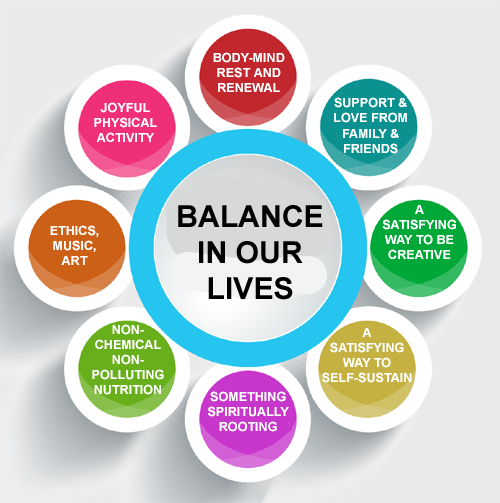 Balance in our lives seems like a “played out” expression, verbal hype that marketers, coaches or therapists (sometimes hard to tell them apart until we look at their wall) use to lure us into buying their coaching programs. But the reason so many people seek out the programs (like
Balance in our lives seems like a “played out” expression, verbal hype that marketers, coaches or therapists (sometimes hard to tell them apart until we look at their wall) use to lure us into buying their coaching programs. But the reason so many people seek out the programs (like 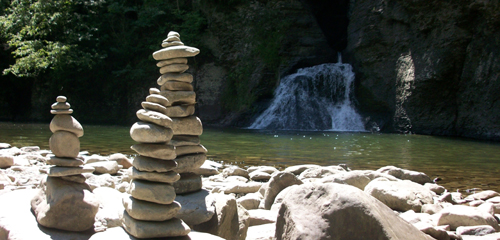
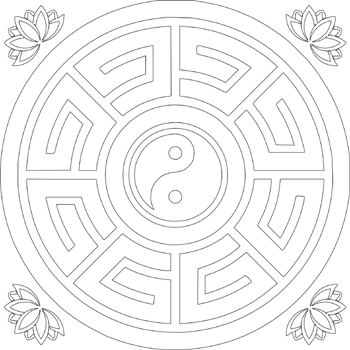
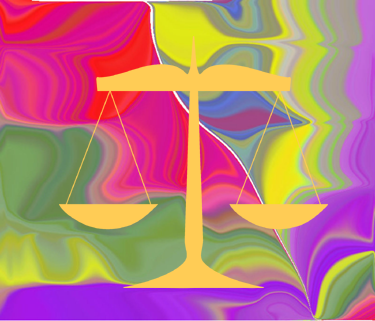 The balance in our lives is really a process. It’s not one place we obtain and stay. As with the wind, there are always new goals, new conditions, new feelings, new advantages, new obstacles for which or from which to adapt.
The balance in our lives is really a process. It’s not one place we obtain and stay. As with the wind, there are always new goals, new conditions, new feelings, new advantages, new obstacles for which or from which to adapt.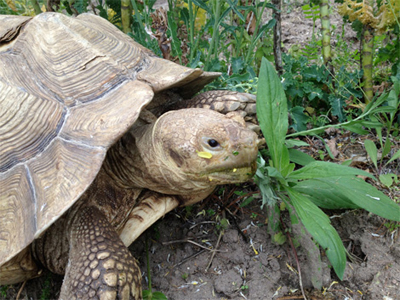 Let’s talk about Extinction and Loss Of Species, and are we responsible?
Let’s talk about Extinction and Loss Of Species, and are we responsible?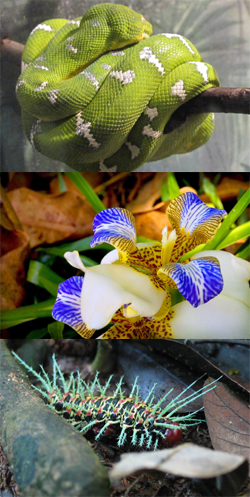 There needs to be a correction, and also modification of a particular concept, to the recently published article I had written for the North American Vegetarian Society (“Meat: no longer just a factory farm issue” in Vegetarian Voice 2012) regarding biodiversity loss.
There needs to be a correction, and also modification of a particular concept, to the recently published article I had written for the North American Vegetarian Society (“Meat: no longer just a factory farm issue” in Vegetarian Voice 2012) regarding biodiversity loss.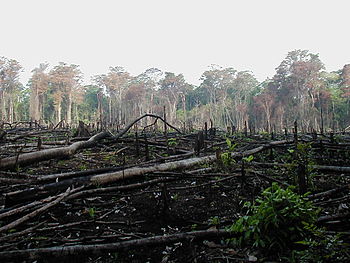 1) We are losing species of life as well as ecosystems on Earth at an unprecedented and alarming rate, estimated to be anywhere between 1,000 and 10,000 times the “background rate”—that which had been seen for the previous several thousands of years. Therefore, it is this massive rate of extinction rather than number of loss that becomes a more meaningful metric and cause for concern.
1) We are losing species of life as well as ecosystems on Earth at an unprecedented and alarming rate, estimated to be anywhere between 1,000 and 10,000 times the “background rate”—that which had been seen for the previous several thousands of years. Therefore, it is this massive rate of extinction rather than number of loss that becomes a more meaningful metric and cause for concern.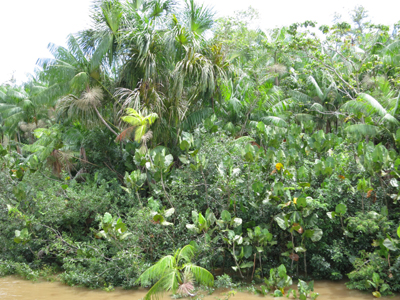 2) It is difficult, if not impossible, to accurately predict the number of species loss per year because of a number of factors. One of the largest unknowns is the exact amount of species that we have on earth, which is a needed component when attempting to determine total numbers of species loss when using an extinction prediction equation. This is one of the reasons the Species Area Curve Relationship method of extinction calculation has led to speculation and wide ranges of numbers of extinct species.
2) It is difficult, if not impossible, to accurately predict the number of species loss per year because of a number of factors. One of the largest unknowns is the exact amount of species that we have on earth, which is a needed component when attempting to determine total numbers of species loss when using an extinction prediction equation. This is one of the reasons the Species Area Curve Relationship method of extinction calculation has led to speculation and wide ranges of numbers of extinct species.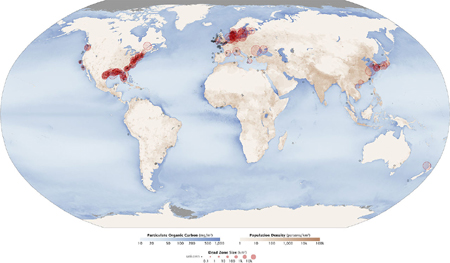 There has been widespread thought that marine species were more resilient to extinction and our further exploitation. However, there is finally a growing amount of evidence that fish and wildlife in our oceans are as, or more, vulnerable to extinction than many terrestrial and freshwater species. Extinction – Fish Vulnerable To Extinction
There has been widespread thought that marine species were more resilient to extinction and our further exploitation. However, there is finally a growing amount of evidence that fish and wildlife in our oceans are as, or more, vulnerable to extinction than many terrestrial and freshwater species. Extinction – Fish Vulnerable To Extinction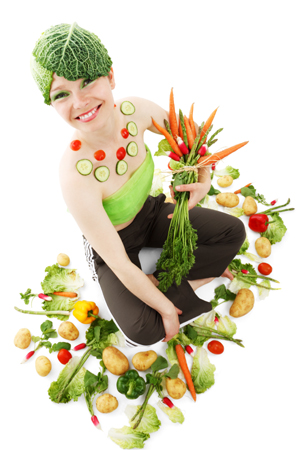
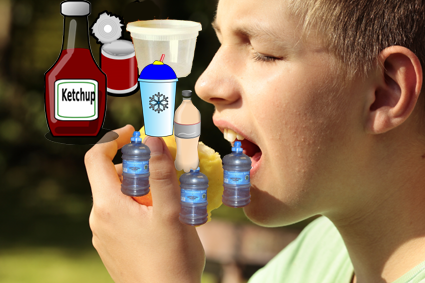 Most of us consume plastics in food. We don’t set out to do it, but some of our plastic technology disintegrates into our food and, therefore, into our blood.
Most of us consume plastics in food. We don’t set out to do it, but some of our plastic technology disintegrates into our food and, therefore, into our blood. Bisphenol A (BPA) is a chemical that has been studied to find that it can disrupt estrogen. It is found as one of the ingredients in many plastics.
Bisphenol A (BPA) is a chemical that has been studied to find that it can disrupt estrogen. It is found as one of the ingredients in many plastics.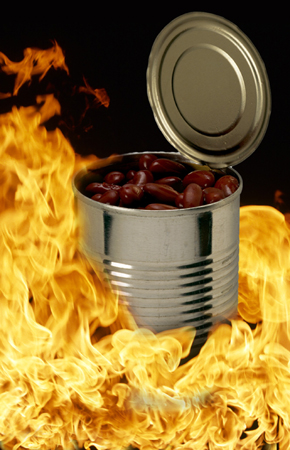 The National Congress Of Legislatures lists the following:
The National Congress Of Legislatures lists the following: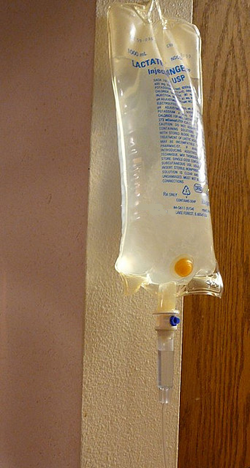 Phthalates are chemicals used in plastic to make it softer or more pliable. Picture one of those IV bags up on a pole that we see on TV or have received in the hospital to get fluids or medicine. The ones in the hospital contain DEHP, diethylhexyl phthalate. It makes the plastic less stiff so bags can be made with thickness to insure non-breakage.
Phthalates are chemicals used in plastic to make it softer or more pliable. Picture one of those IV bags up on a pole that we see on TV or have received in the hospital to get fluids or medicine. The ones in the hospital contain DEHP, diethylhexyl phthalate. It makes the plastic less stiff so bags can be made with thickness to insure non-breakage.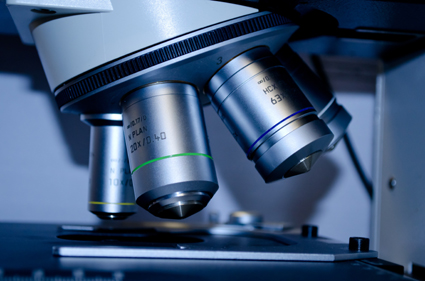 Why would no company or agency do research on whether or not plastics are safe? The answer has to do with, you may have guessed it, profit. If companies did research about plastics in food, chances are, someone would hear about it and publish the results The big D companies and the conglomerate cookware companies don’t want to do any research that might show their products are dangerous. They also discourage others from doing them.
Why would no company or agency do research on whether or not plastics are safe? The answer has to do with, you may have guessed it, profit. If companies did research about plastics in food, chances are, someone would hear about it and publish the results The big D companies and the conglomerate cookware companies don’t want to do any research that might show their products are dangerous. They also discourage others from doing them.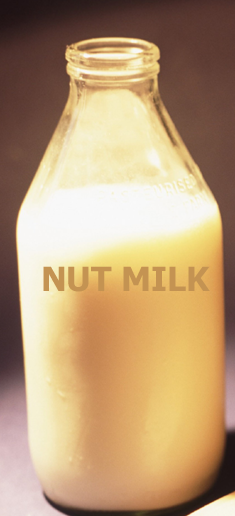 Nut milk is one of the most delicious, nutritious foods I have ever had the pleasure of ingesting, and, of late, of preparing. Until about a week ago, I had always bought nut milk: almond milk, flax milk, soy milk. The process began when I no longer chose to drink flax milk that was not organic. I had been happily buying this wonderful flax milk whose manufacturers promised they were working on putting out an organic version.
Nut milk is one of the most delicious, nutritious foods I have ever had the pleasure of ingesting, and, of late, of preparing. Until about a week ago, I had always bought nut milk: almond milk, flax milk, soy milk. The process began when I no longer chose to drink flax milk that was not organic. I had been happily buying this wonderful flax milk whose manufacturers promised they were working on putting out an organic version. The instruction included the use of some type of straining cloth as for tofu or gauze which I didn’t have so I haven’t been using, plus my smoothies are always very thick and full of seed fiber. Another interesting thing is that it is not very common to find organic cotton tofu cloth. This means the alternative would somewhat defeat the idea of using organically grown, non-GMO, nuts or seeds, since most cotton is genetically modified and would have the distinction of being certified non-GMO if it were organic. So I had hesitated in the past.
The instruction included the use of some type of straining cloth as for tofu or gauze which I didn’t have so I haven’t been using, plus my smoothies are always very thick and full of seed fiber. Another interesting thing is that it is not very common to find organic cotton tofu cloth. This means the alternative would somewhat defeat the idea of using organically grown, non-GMO, nuts or seeds, since most cotton is genetically modified and would have the distinction of being certified non-GMO if it were organic. So I had hesitated in the past. I put 2 cups of filtered water in a glass with a little more than a half cup of almonds, fulfilling my ratio of 4 to 1 for nut milk. I found some chlorine-free parchment paper and covered the glass. I still haven’t figured out a way to stabilize the covering, but I put the glass in the refrigerator overnight. The next morning, I put the water and the almonds in the blender and blended for about a minute. What I got was thicker than the store bought variety nut milk, was a lovely organic, perfectly fresh nut milk and did not contain any of the gums or supplements possibly made from the synthetics that are allowed by the Organic Board. And, look, Mom and Dad, I made it myself.
I put 2 cups of filtered water in a glass with a little more than a half cup of almonds, fulfilling my ratio of 4 to 1 for nut milk. I found some chlorine-free parchment paper and covered the glass. I still haven’t figured out a way to stabilize the covering, but I put the glass in the refrigerator overnight. The next morning, I put the water and the almonds in the blender and blended for about a minute. What I got was thicker than the store bought variety nut milk, was a lovely organic, perfectly fresh nut milk and did not contain any of the gums or supplements possibly made from the synthetics that are allowed by the Organic Board. And, look, Mom and Dad, I made it myself. There’s one great reason to drink nut milk: we love ourselves and care about our health. According to the Physicians Committee For Responsible Medicine, 75% of the world (25% in the US) is lactose intolerant. This is true because most of us lose our lactase enzyme (present in babies and toddlers) which allows us to successfully break down milk for use by the bloodstream. So, some of us, after age 3, cannot break down milk and notice difficulty in drinking it.
There’s one great reason to drink nut milk: we love ourselves and care about our health. According to the Physicians Committee For Responsible Medicine, 75% of the world (25% in the US) is lactose intolerant. This is true because most of us lose our lactase enzyme (present in babies and toddlers) which allows us to successfully break down milk for use by the bloodstream. So, some of us, after age 3, cannot break down milk and notice difficulty in drinking it. Aside from the health aspects, nut milk made easily is a supreme convenience for me. It means I can make nut milk as long as I have nuts and a blender.
Aside from the health aspects, nut milk made easily is a supreme convenience for me. It means I can make nut milk as long as I have nuts and a blender. I soak flax seeds overnight, and then, I grind them to break open the hulls. This is a mess. But, I like it. It’s less money than buying the high speed machine that devours every part of every food so grinding is not needed.
I soak flax seeds overnight, and then, I grind them to break open the hulls. This is a mess. But, I like it. It’s less money than buying the high speed machine that devours every part of every food so grinding is not needed. Olive oil science is much more elusive than discussions about how great olive oil is. There is lots of vague discussion about how it is bad for us when it smokes. Much like treated wood when it burns, the olive oil spits out toxins which produce free radicals, nasty suckers that cruise the body for a place to move in and couple. My goal in writing his article was to find the science behind all the generic verbiage about what happens to olive oil at smoke point.
Olive oil science is much more elusive than discussions about how great olive oil is. There is lots of vague discussion about how it is bad for us when it smokes. Much like treated wood when it burns, the olive oil spits out toxins which produce free radicals, nasty suckers that cruise the body for a place to move in and couple. My goal in writing his article was to find the science behind all the generic verbiage about what happens to olive oil at smoke point. During my olive oil science search, I read about many TV chefs who use extra virgin olive oil for sauteing, roasting and grilling and lots of consumer opins about how, if the TV chef says it, it must be right.
During my olive oil science search, I read about many TV chefs who use extra virgin olive oil for sauteing, roasting and grilling and lots of consumer opins about how, if the TV chef says it, it must be right. Happily for all of us, Mark goes on to cite an article that explains what is produced and what is toxic about it, for which I thank him. It is from Science Daily’s June 17, 2005 article, sourced from Elhuyar Fundazioa (translated to Language Foundation), from U of the Basque Country Pharmacy Faculty.
Happily for all of us, Mark goes on to cite an article that explains what is produced and what is toxic about it, for which I thank him. It is from Science Daily’s June 17, 2005 article, sourced from Elhuyar Fundazioa (translated to Language Foundation), from U of the Basque Country Pharmacy Faculty. “You cannot test oil for its smoking point on your stove. The so-called ‘smoking point’ is actually the point at which the molecules of your oil start falling apart. This happens long before there is any visible smoke above the pan. At the point where you can see the smoke, it is already too late.” (rumtscho at stackexchange.com)
“You cannot test oil for its smoking point on your stove. The so-called ‘smoking point’ is actually the point at which the molecules of your oil start falling apart. This happens long before there is any visible smoke above the pan. At the point where you can see the smoke, it is already too late.” (rumtscho at stackexchange.com) Our habit of not paying for our food is common. Since most of us are basically moral and would not thoughtfully take food without growing it or compensating the grower for it, this statement needs further discussion. We’ll start with the upfront premise that it is our duty to preserve our humanity and whatever else lives on our planet with good food.
Our habit of not paying for our food is common. Since most of us are basically moral and would not thoughtfully take food without growing it or compensating the grower for it, this statement needs further discussion. We’ll start with the upfront premise that it is our duty to preserve our humanity and whatever else lives on our planet with good food. Newsflash! Currently, no one pays a monetary price for this. Everyone’s grandchildren will pay for it.
Newsflash! Currently, no one pays a monetary price for this. Everyone’s grandchildren will pay for it. This means no one pays financially for the circumstances we create, and no one pays to clean what we dirty.
This means no one pays financially for the circumstances we create, and no one pays to clean what we dirty. (If we wanted to look from a health perspective, we also pay because eating meat, fish, fowl and dairy cause health issues. So, we pay with our health.)
(If we wanted to look from a health perspective, we also pay because eating meat, fish, fowl and dairy cause health issues. So, we pay with our health.) If we don’t educate ourselves because we listen to Big News which is close friends with Big Agro which miseducates us or omits how agriculture drives global depletion fueled by our gluttony; we are closing our eyes and failing to learn. Many teachers are not yet aware of the vast differences in land, oceans, air, soil used to farm animals or plants. Even if we don’t mean to do it, if we don’t investigate how we are not paying, we perpetuate the hurt.
If we don’t educate ourselves because we listen to Big News which is close friends with Big Agro which miseducates us or omits how agriculture drives global depletion fueled by our gluttony; we are closing our eyes and failing to learn. Many teachers are not yet aware of the vast differences in land, oceans, air, soil used to farm animals or plants. Even if we don’t mean to do it, if we don’t investigate how we are not paying, we perpetuate the hurt. 3)
3)  4)
4) John Perkins told a story about the Shuar Tribe in Ecuador. One of the community came back to the elders with news that a plant along the trail was healthy when he went by, but 72 hours later, when he came back, the plant was sick. The elders had a council meeting, conferring with a wise one who said the plant gave a sign that the path was overused. They decided to take community responsibility and ruled to close the path.
John Perkins told a story about the Shuar Tribe in Ecuador. One of the community came back to the elders with news that a plant along the trail was healthy when he went by, but 72 hours later, when he came back, the plant was sick. The elders had a council meeting, conferring with a wise one who said the plant gave a sign that the path was overused. They decided to take community responsibility and ruled to close the path.






